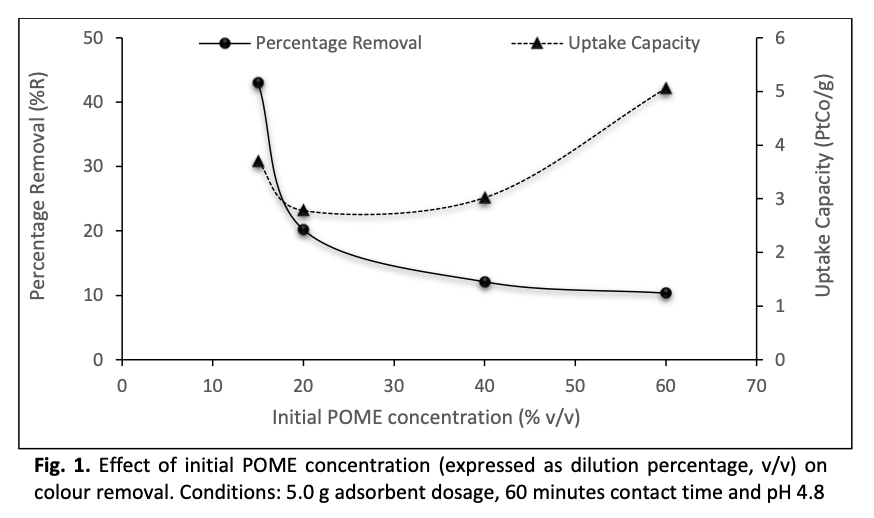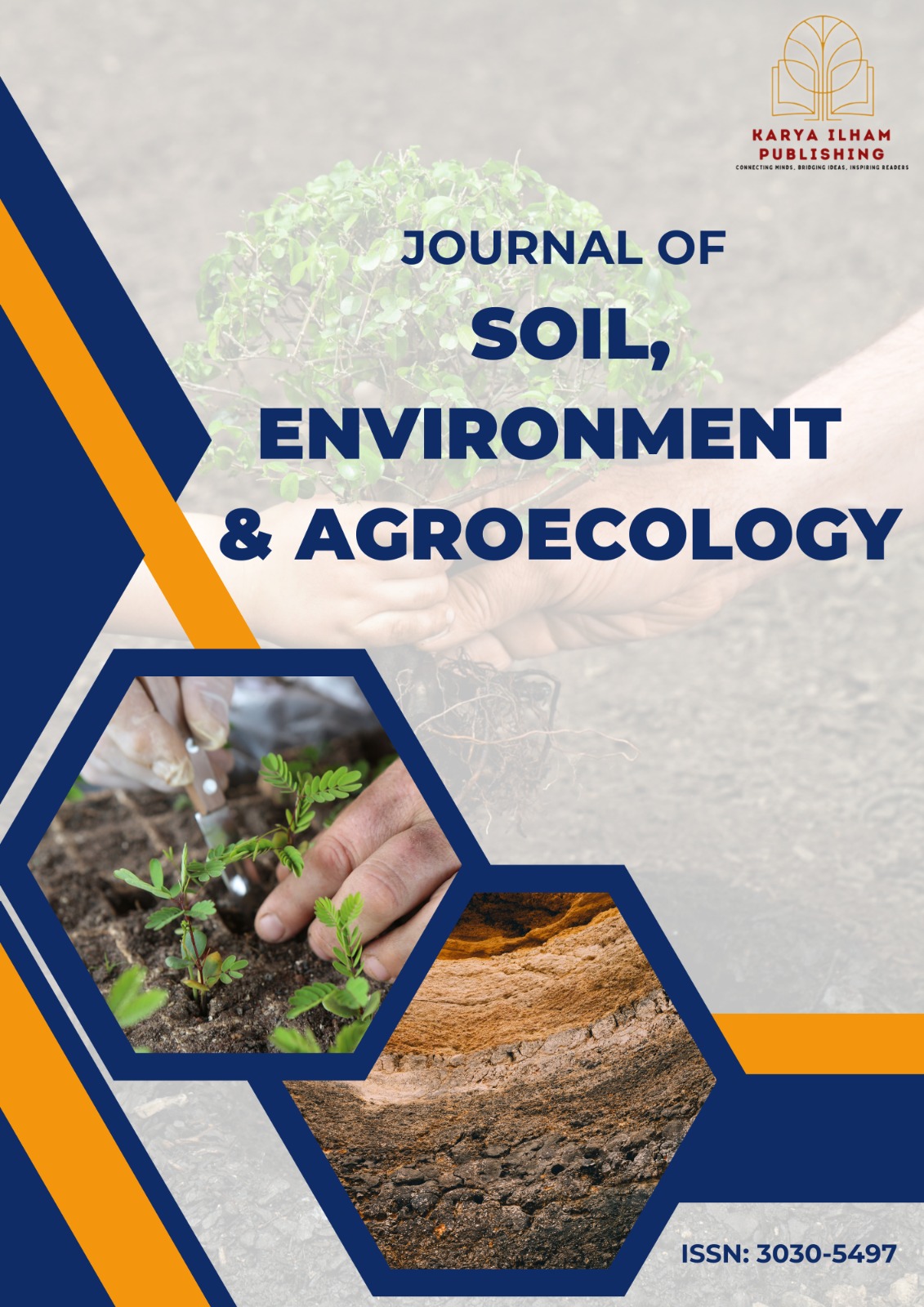Removal of Colour from Palm Oil Mill Effluent using Thermally Processed Dolomite: Batch Adsorption and Modelling Study
Keywords:
Palm oil mill effluent, colour removal, adsorption, dolomite, wastewater treatmentAbstract
Palm oil mill effluent is a significant wastewater generated during palm oil processing and is characterized by its dark brown colour due to high concentrations of recalcitrant organic compounds. Discharging untreated POME can disrupt aquatic ecosystems and environmental quality. Among alternative approaches, adsorption is widely recognised for its simplicity, affordability and effectiveness in pollutant removal. This study evaluates the effectiveness of thermally processed dolomite as an adsorbent for removing colour from POME through batch adsorption experiments. The dolomite was thermally treated at 800 °C for 6 hours. Experimental parameters were varied, including initial concentration (15 - 60% v/v), adsorbent dosage (2.5 - 12.0 g), contact time (15 - 240 minutes), and pH (4 - 10). Adsorption behaviour was then analysed using isotherm and kinetic models for investigation the underlying mechanism. Optimal conditions for colour adsorption were obtained at 15% (v/v) initial concentration, 5.0 g dolomite dosage, 180 minutes contact time and pH 7.5, achieving a maximum colour removal of 79.91%. The equilibrium data best aligned with the Langmuir isotherm (R² of 0.8467), indicating that adsorption occurred in a single layer on a uniform surface. Kinetic analysis showed a strong correlation with the pseudo-second-order model (R² of 0.9844), highlighting chemisorption as the dominant process. In conclusion, thermally processed dolomite is an efficient material for treating colour from POME and holds potential for sustainable wastewater treatment applications.









